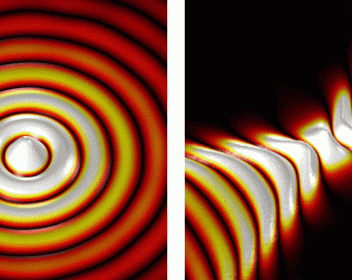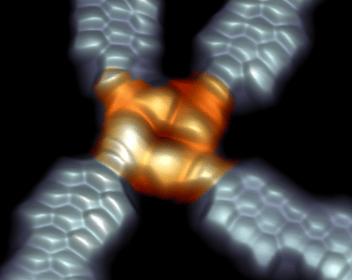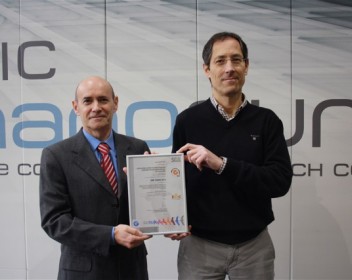Newsroom
News
Apply for a Basque PhD grant with nanoGUNE
NanoGUNE, located at the Ibaeta Campus of the UPV/EHU in Donostia – San Sebastián, offers PhD opportunities to graduates in Physics, Chemistry, Engineering, Biology, and related areas to get their PhD degree.
Spain: Industry sides with science
Phononic SEIRA - Enhancing light-molecule interactions via crystal lattice vibrations
Researchers from CIC-nanoGUNE (San Sebastián, Spain), in collaboration with the Donostia International Physics Center (San Sebastián, Spain), Materials Physics Center (CFM, CSIC-UPV/EHU, San Sebastián, Spain) and University of Oviedo demonstrate a new way to strongly couple infrared light and molecular vibrations, by utilizing phonon polariton nanoresonators made of hexagonal boron nitride, a Van der Waals material. The results published in Light: Science & Applications open new avenues for fundamental studies of vibrational strong coupling, as well as for the development of novel infrared sensors for chemical recognition of very small amounts of molecules.
The nanoscience and nanotechnology festival due to be held this year in Bergara
The Severo Ochoa Centres and Maria de Maeztu Units Alliance (SOMMa) aims at promoting Spanish science of excellence, and safeguarding its competitiveness
Basque researchers turn light upside down
Researchers from CIC nanoGUNE (San Sebastian, Spain), in collaboration with the Donostia International Physics Center (DIPC, San Sebastian, Spain) and Kansas State University (USA), report in Science the development of a so called 'hyperbolic metasurface' on which light propagates with completely reshaped wafefronts. This scientific achievement towards a more precise control and monitoring of light is highly interesting for the long run technological challenge of miniaturizing optical devices for sensing and signal processing.
Contacting the molecular world through graphene nanoribbons
NanoGUNE has its R&D&i management system certified in accordance with the UNE 166002:2014 Standard
Nanoparticles act as enzymes
The result in brief of the EU project ARTEN, lead by Mato Knez (leader of the Nanomaterials group at nanoGUNE) are now available at CORDIS.
Los poderes de la nanociencia en cómic
Agenda
| Mon | Tue | Wed | Thu | Fri | Sat | Sun |
|---|---|---|---|---|---|---|
|
1
|
2
|
3
|
4
|
5
|
6
|
7
|
|
|
|
|
|
|
|
|
|
8
|
10
|
11
|
12
|
13
|
14
|
|
|
|
|
|
|
|
|
|
|
15
|
16
|
17
|
18
|
19
|
20
|
21
|
|
|
|
|
|
|
|
|
|
22
|
23
|
24
|
25
|
26
|
27
|
28
|
|
|
|
|
|
|
|
|
|
29
|
30
|
31
|
1
|
2
|
3
|
4
|
|
|
|
|
|
|
|
|
Events
- 04/02/2026 to 06/02/2026
nanoGUNE Winter School 2026
nanoVISUALS
Find events' photos, experimental images, videos, audios, and nanoGUNE's corporate images.




